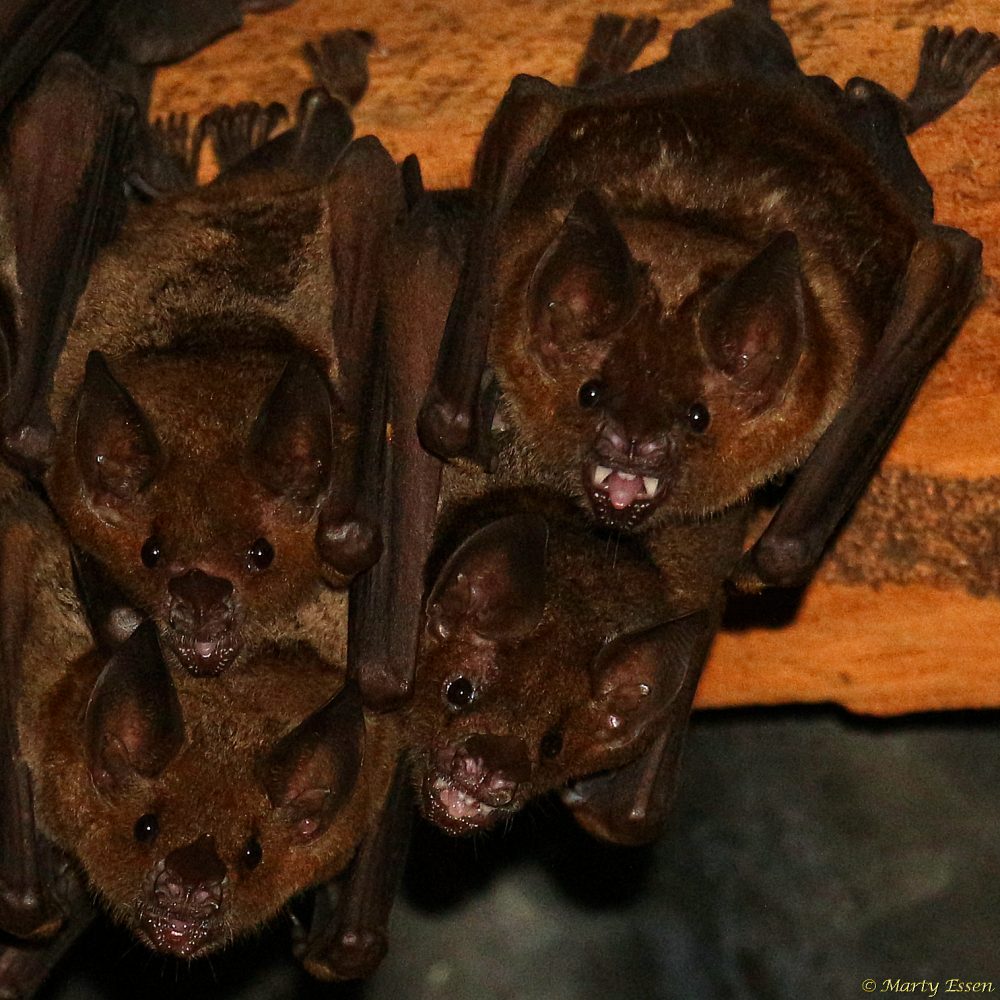
Marty’s photo of the day #3131: The following excerpt from my second book, Endangered Edens: Exploring the Arctic National Wildlife Refuge, Costa Rica, the Everglades, and Puerto Rico, describes the shot:
When we planned our hike to the farmhouse, I immediately thought of the two-story farmhouse my grandparents had owned in northern Minnesota. I knew the Costa Rica house wouldn’t be as big, but I hadn’t imagined it being the size of a three-room shed either. As we approached, I could see that the front door of the unpainted, wood plank building was missing, and bats were flying in and out. Although the traffic was infrequent, that any bats were flying on a sunny day surprised me.
I stepped inside to the rapid ta-ta-ta-to of panicked wings. Like a horror movie, when you expect the villain to reach in from the dark and grab the girl’s leg—and still jump when it happens—I had expected the thunder of flutter and still jerked back my head.
Soon the bats calmed down, allowing me to scan the walls of the small front room. Only a few bats lingered here, as light filtered in through the door and a partially open window shutter. I could hear many more bats in the two dark rooms. The bats in the front room were greater white-lined bats. Two wavy white lines running down their backs made them easily distinguishable from other species. Another fitting name for them would have been Velcro-ball bats. They’d cling to the rough plywood walls, and if frightened, they’d fly out a few feet and back—sticking instantly to the wall, as if they were Velcro balls hitting self-stick mitts.
Entering the large, dark back room was intense. When I shined my flashlight on the rough sawn support beam, three rows of shoulder-to-shoulder bats glared back at me. Several bared their fangs and some took flight. I could feel the wind from their wings! The only time I had experienced bats like this was at Culebrones Cave in Puerto Rico, but here they had less flying room. Even though catching rabies from bats in Costa Rica is extremely rare, the disease is usually fatal for humans. Should a bat miscalculate its flight and end up scratching or biting me in a panic, rabies shots would be necessary.
On the other hand, this was a great opportunity to get some spectacular photos. Aside from having to steel my nerves, the lack of light created focusing problems for my camera. When I stepped outside to check the first series of photos on my digital SLR’s screen, they all looked blurry. Shining a flashlight directly on the bats didn’t work much better, as the light combined with the camera flash to wash out part of each photo. The key was to light the bats, focus, turn off the flashlight, and shoot using only the camera’s flash for illumination. I shot a series of photos doing everything myself but felt I could get crisper shots if—“Deb, I need you!”
“You’re going to make me go inside and help you. Aren’t you?”
“It would really help.”
“Ooo . . . kay. But you owe me!”
My wife is a brave woman.
By looking at my photos afterward, I could tell that three species of bat occupied the farmhouse: greater white-lined bats, Seba’s short-tailed bats, and another species I couldn’t positively identify.